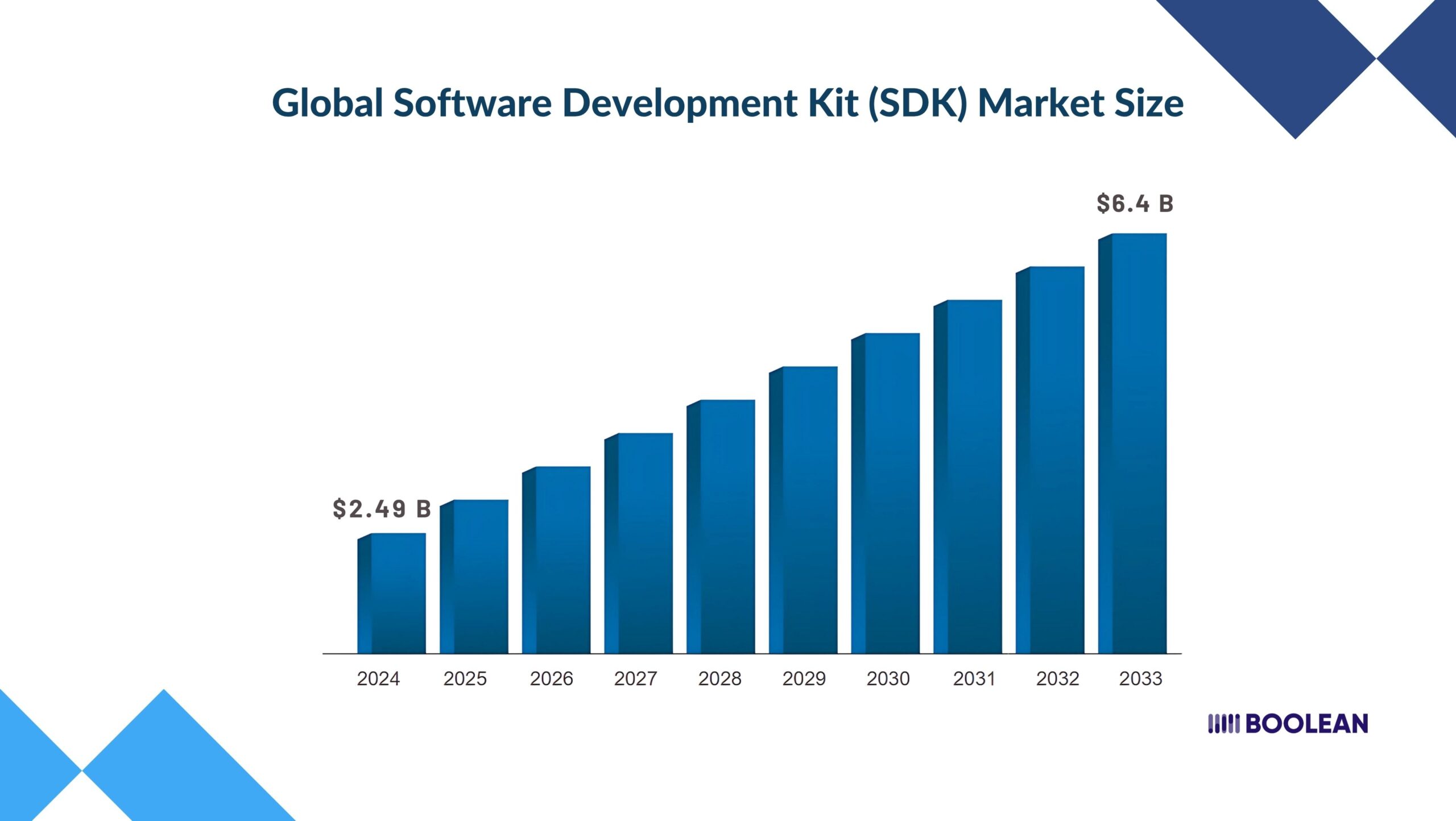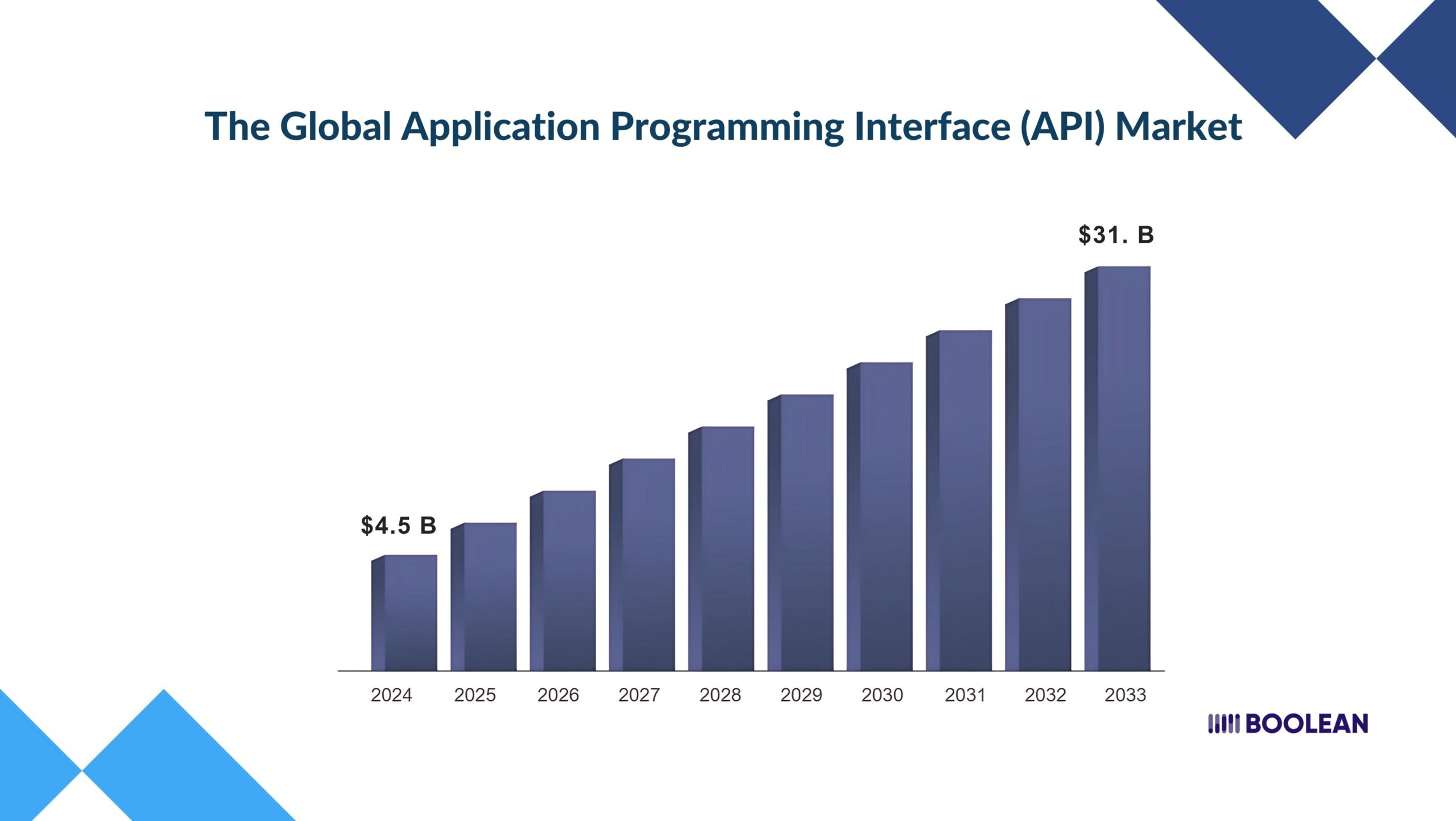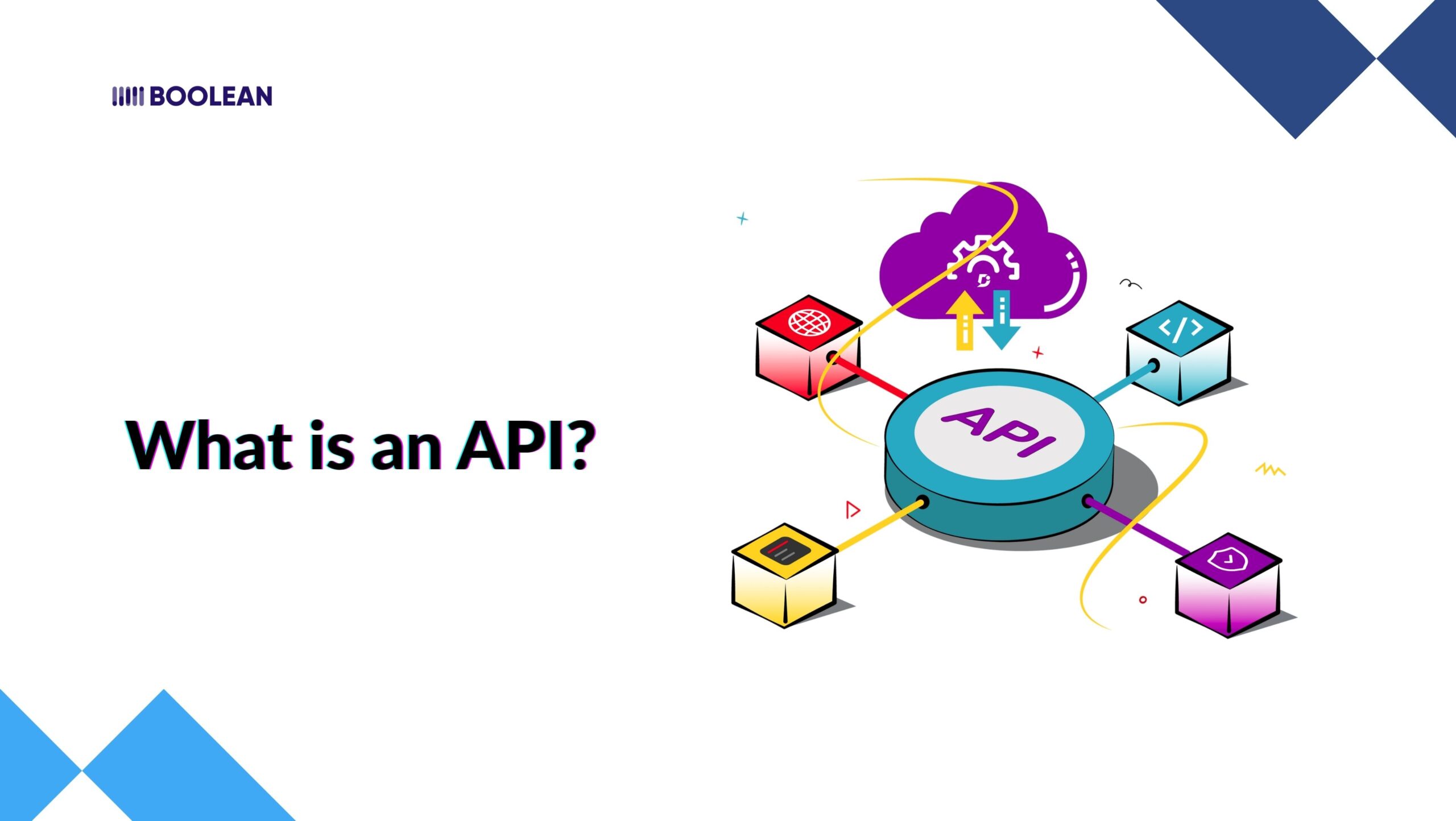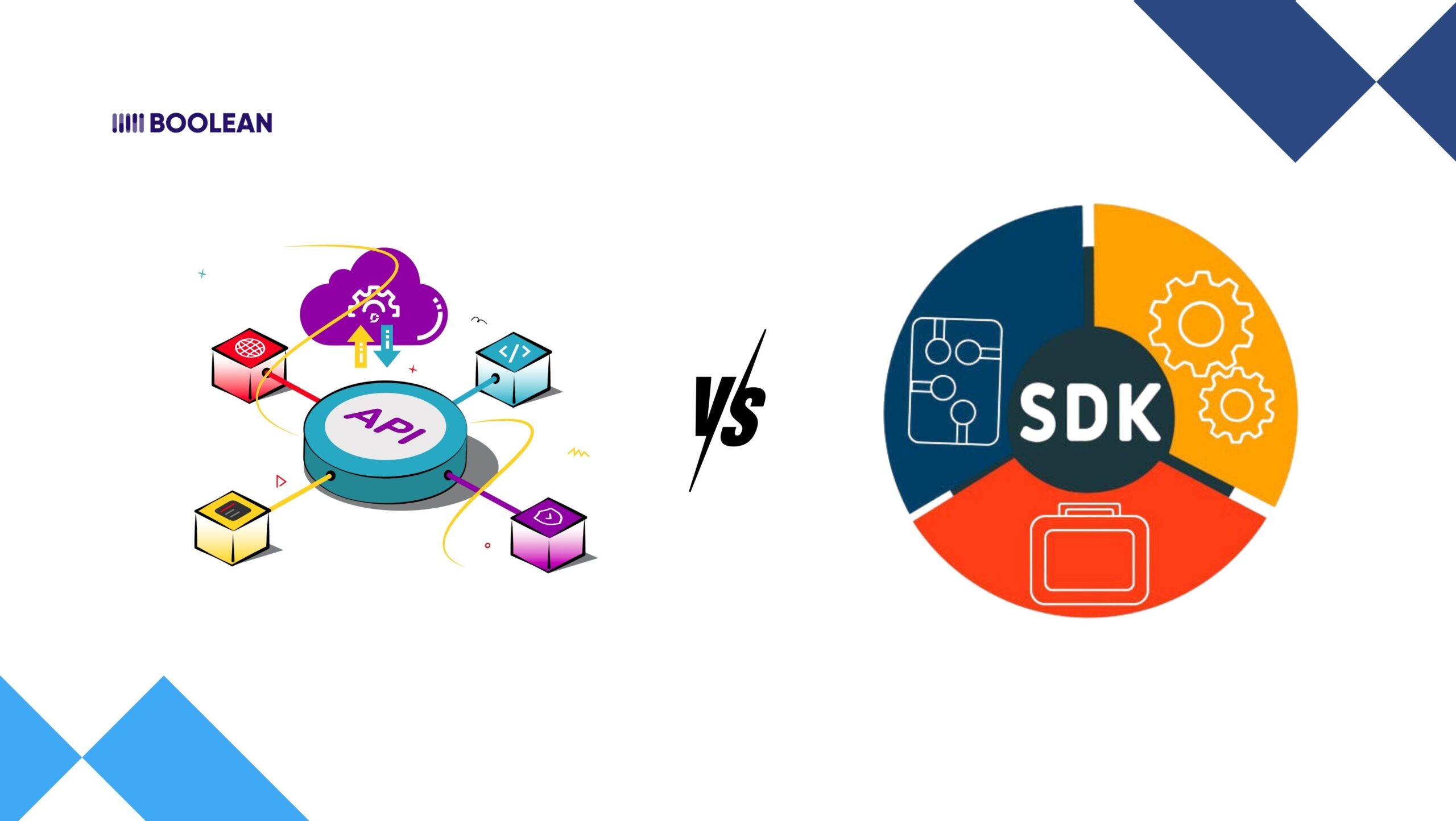Introduction
If you’re starting to build mobile apps, you’ve probably heard the terms SDK and API.
The SDK vs API debate gets mentioned a lot and can seem confusing because people sometimes use them like they mean the same thing, but they don’t.
Here is the truth – they are not the same, and by choosing the wrong approach in the API vs SDK decision, you can waste time, flexibility, and even user trust.
Understanding what makes your business unique examples of successful implementations can help guide your choice.
So, how do you decide what to build or integrate, a mobile SDK or an API?
Let’s start it this: You are not alone in this confusion.
Whether you are a single mobile developer working on Python mobile development projects, a startup founder, or part of a product team that shapes the future of a platform, this question is more common than you think. Even experienced app developers freelance professionals often debate this choice.
The lines between the SDK vs API may feel blurred, especially when the documentation is not always user-friendly, and you’re dealing with complex mobile application architecture diagram requirements.
But here’s the good news: we’re going to clear things up.
And it’s worth paying attention. The price of the Software Development Kit (SDK) market was $2.49 billion in 2024, and it skyrockets to $ 6.45 billion by 2033, growing at a CAGR of 11.8%.

This growth affects everything from streaming app development services to basic utility apps like a currency converter app for iPhone.
And the API market? Even bigger. The global API market stood at $4.53 billion in 2024, and it’s set to jump to a jaw-dropping $31.03 billion by 2033, growing at a stunning 23.83% CAGR.

This growth is driven by the benefits of an API in modern app development and the relatively low cost of API integration.
Why the surge? Because mobile experiences are becoming richer. Faster. More connected.
Whether it is streamlining integration, accelerating development, or offering flexibility in platforms, SDKs, and API, is fueling that development. From group chat app features to video chat without internet capabilities, the possibilities are expanding.
But then, you do not need both for every landscape. Understanding the app development process steps and the app building process will help you make the right choice.
This guide will walk you through the differences, use cases, and how to choose what fits your platform’s needs best, without any confusion. We’ll also explore how much does it cost to develop an app with each approach and the app development average cost considerations.
Let’s make it simple. Let’s get into SDK vs API — and what you actually need to build.
What is an API?

Let’s pretend you’re at a coffee shop. You (the mobile app) want a latte (the data). But you don’t barge behind the counter to steam milk yourself.
Instead, you order from the barista (the API).
An API is something like that, or Application Programming Interface, which is like a helpful middleman. It lets your mobile app talk to other software, services, or systems, without reinventing the wheel. This is one of the core benefits of an API – simplicity and standardization.
In mobile app development, API integration is how your app gets access to things like maps, weather data, user logins (including data received when users sign up using social media), payment systems, you name it.
Whether you’re building with Python mobile application frameworks or native tools, APIs are essential.
Instead of building all those tools from scratch, you just plug into an existing API toolkit. This approach is common in ios developing and Android development alike.
It saves time. This simplifies your code. And this lets you focus on what exactly matters: providing value to users, whether you’re building a cash one app clone or a sophisticated genius scan pdf scanner alternative.
So, where does it fit in the SDK vs API conversation?
Here’s the thing — APIs are lean and flexible. They’re ideal when your app needs to pull data, push updates, or interact with cloud services.
This is particularly important when considering MPA vs SPA architectures and working with cloud integration consulting services.
Especially in projects where you’re building lightweight apps, fast prototypes, or services that rely on microservices or REST API integration. The cost of API integration is typically lower than full SDK implementation.
Need a login system? Use an API.
Want to fetch user data from a server? Use an API.
Streaming content, booking services, or accessing third-party features? API.
Need to convert website to iPhone app? APIs can bridge that gap.
It’s no wonder API for mobile app development has become such a powerful standard, especially when combined with proper mobile app security practices.
In fact, mobile API usage has exploded over the past few years. Developers are opting for APIs not just for convenience, but for mobile app scalability.
APIs allow your app to evolve, grow, and connect with new tools over time, without needing constant overhauls. This is crucial when you’re wondering how much does cost to make an app that can scale.
Here’s a helpful resource if you’re looking to explore options: Top Free APIs for Mobile Apps for Enhanced Functionality ← is worth bookmarking.
Quick tip from trenches:
If your team is laser-focused on the intuitive UI design and fast feature rollout, an API-first approach can give you the agility you need-especially early in the app dev process. Exchange?
You will need to manage more integration and certification details at your end, including mobile application security considerations.
But when the API design is solid, with clear closing points, good documentation, and scalable architecture (including proper mobile application database design), it becomes a powerful bridge between your app and the services that rely on your users.
What is an SDK?

Now let’s talk about SDKs — the Software Development Kits.
Picture this: You’re building a house. You could craft every nail, plank, and pipe from scratch, or you could grab a pre-fab kit with walls, wiring, and even a pre-installed doorbell. That’s an SDK. This is what makes your business unique examples of efficient development come from.
While APIs help your app talk to other systems, SDK gives you everything that you need to create specific functionality in your app from the ground up.
Whether you’re using an Android programming IDE or Xcode for iOS, SDKs integrate directly into your development environment.
SDK is something like a toolbox. Inside?
Code libraries, documentation, compilers, sometimes even UI elements, all bundled to help you implement a feature faster, smoother, and without having to piece it together yourself. Modern IDE for Android tools make SDK integration even smoother.
That’s what an SDK is. A pre-packaged growth environment that helps you create, integrate, and customize.
And this is especially common when you are working with a specific platform SDK, such as Firebase, Facebook, or Stripe’s mobile SDK. Even specialized tools like genius scan iCloud scan functionality rely on SDKs.
Where does it fit in the SDK vs API debate?
Think in this way – if an API is a waiter to bring your order, SDK is a fully equipped kitchen that you install at home.
You are not only consuming features; You are embedding them directly in your app. This deep integration is essential for features like how does geo fencing work in location-based apps.
This can be a game-changer when you are creating a feature-rich app that demands speed, reliability, or offline functionality. Consider apps that need video chat without internet capabilities using peer-to-peer connections – these rely heavily on SDKs.
In fact, many mobile teams choose a mobile SDK when they want things to work, or when the performance matters the most.
You’ll often see SDKs used for:
- Analytics
- Crash reporting
- Ads and monetization
- Payment processing
- AR/VR or custom hardware integration
- Customize messaging apps functionality
- Group chat app features
- Mobile database operations
SDKs are also great for building a Minimum Viable Product (MVP) in mobile app development, where time-to-market is everything, but quality can’t slip.
And as you scale, choosing the right SDK architecture matters. Many modern SDKs are made with a composable architecture, allowing you only to choose the pieces you need without bloating your app. This is visible in your mobile application architecture diagram.
But here’s what you need to keep in mind:
Unlike APIs, SDKs often come with more dependencies. There’s more setup involved.
You need to manage versioning, handle compatibility with OS updates, and pay attention to performance on lower-end devices.
But the trade-off? Power. Control. And often, a better SDK developer experience, especially when using modern Android programming IDE tools.
If you are planning to create a mobile SDK for your own platform, you will also need to think about long-term factors:
- The SDK lifecycle
- SDK versioning best practices
- How to onboard developers with documentation
- Integration with SaaS video production tools if relevant
- And even your SDK monetization model, if it’s part of your business plan
Want to go deeper into the tools that help you build robust SDK based apps? Check out The Best Mobile App Development Frameworks to get started. These frameworks often include both IDE for Android support and iOS tools.
A quick note on integrations:
Many platforms today support third-party SDK integration, letting you plug in existing tools without starting from scratch.
From native SDK integration for iOS app development and Android to cross-platform options, there’s no shortage of ways to speed things up, without losing quality.
At the end of the day, SDKs are ideal when you want to build deeply integrated, high-performance functionality, either as a developer building for your own platform or as a team choosing tools to integrate into your mobile app. This is especially important for mobile application security features.
SDK vs API: Key Differences

By now, you’re probably thinking: “Okay, I get what an SDK is. I get what an API does. But which one do I actually need?” This is where understanding SDK vs API becomes crucial.
That’s exactly what this section is here to help you figure out.
Choosing between SDK vs API is not always black and white. In many real-world scenarios, you may also need both. For instance, streaming app development services often combine APIs for content delivery with SDKs for player functionality.
But understanding the main differences and how they affect the architecture, performance, and developer experiences of your app, you can save yourself hours of confusion below the line.
Let’s break it down with a clear, side-by-side view, keeping in mind factors like mobile app security and the overall app building process.
SDK vs API: A Practical Comparison
| Feature/Aspect | API | SDK |
|---|---|---|
| What it is | An interface that allows apps to communicate with other services or platforms | A bundle of tools and libraries to help build or extend an app’s capabilities |
| Typical Use | Data exchange (like data received when users sign up using social media), cloud interactions, service integration | Embedding complex or native functionality directly into an app |
| Integration type | API integration, often using REST API integration | SDK integration, usually with a specific platform SDK |
| Scope | Lightweight, focused on specific tasks (e.g., fetch user data) | Comprehensive, includes everything needed to build a feature |
| Flexibility | High – easy to change or swap | Lower – more tightly coupled to the app |
| Dependency | External service – your app talks to it via the internet | Embedded – becomes part of your mobile app |
| Best for | Scalable communication, microservices, and modular design (MPA vs SPA architectures) | High-performance features, native integrations, and offline tasks |
| Examples | API for mobile app: login API, weather API, payment gateway API | Mobile SDK: Facebook SDK, Firebase SDK, AR SDKs, genius scan pdf scanner SDK |
| Security Focus | API authentication mobile, token-based access | SDK security mobile, bundled encryption or obfuscation tools |
| Documentation | API docs, endpoint references, API toolkit | SDK documentation tools, code samples, lifecycle guidelines |
| Developer Effort | Lower setup, requires network handling | Higher setup, more maintenance, but better control |
| Versioning | URL or versioned endpoint model | Follows SDK SDK lifecycle, uses SDK versioning best practices |
So, which one should you choose for a quick overview?
Let us keep it real: The answer depends on what you are building, how fast you need to move, and how deeply your integration. Consider factors like mobile application database requirements and whether you need features like customize messaging apps capabilities.
Here’s a quick guide:
Choose mobile API when:
- You need a simple, lightweight solution.
- You’re connecting to external systems or cloud integration consulting services.
- You want fast API integration with minimal app size impact.
- Your architecture is based on microservice API, mobile, or modular components.
- You’re looking to convert website to iPhone app quickly.
Choose mobile SDK when:
- You need rich, native functionality (like how does geo fencing work implementations).
- You’re working with a mobile developer team focused on performance.
- You’re building an offline-capable app or need access to device hardware.
- You want tight control over features and UI with native SDK integration.
- Building features like video chat without internet using peer-to-peer connections.
- Creating a cash one app clone with complex financial features.
Some companies even build mobile API and SDKs in parallel, offering options depending on developer needs. This is common in the app dev process for platform companies.
When building your own SDK for platform use, think far beyond just code. You’re creating a developer product. That means:
- Designing with SDK architecture best practices visible in your mobile application architecture diagram.
- Prioritizing SDK developer experience and clean onboarding.
- Offering consistent SDK documentation tools.
- Considering integration with mac os emulator for iOS for testing.
- Thinking about the SDK monetization model from day one.
APIs also deserve thoughtful API design, including clear versioning, intuitive endpoints, and scalable mobile API usage patterns. The benefits of an API become clear when properly implemented.
When to Choose Mobile SDK
Let’s be honest—you don’t always have time to build everything from scratch. Sometimes, you just need a pre-built solution that just works.
That’s where a Mobile SDK shines. But when exactly should you use one?
1. When Speed is Your #1 Priority
- Building an MVP? SDKs let you launch faster by skipping months of backend work.
- Example: Need authentication? Use Firebase Auth SDK instead of coding OAuth flows.
- “But what about flexibility?” Sure, you trade some control, but for startups, speed = survival.
2. When You Need Native Device Features
- Hardware access: Camera, GPS, Bluetooth—SDKs give direct, optimized access.
- Example: AR filters? ARKit (iOS) or ARCore (Android) SDKs handle the heavy lifting.
- Without an SDK, you’re stuck writing platform-specific code (twice the work).
3. When Consistency Matters Across Apps
- Branded experiences: Payment flows (Stripe SDK), social logins (Facebook SDK capturing data received when users sign up using social media), they look and work the same everywhere.
- Example: If your app integrates with Spotify or needs streaming app development services, their SDK ensures a seamless experience.
- Bonus: Users trust familiar UIs (no one wants a weird custom payment form).
4. When Offline Functionality is a Must
APIs need the internet. SDKs? They can cache data locally and sync later.
- Example: A fitness app tracking runs offline (thanks, HealthKit SDK). Or apps offering video chat without internet through local network connections.
- No signal? No problem. This is crucial for mobile application database synchronization.
5. When Monetization is Built-In
Ads (AdMob SDK), in-app purchases (RevenueCat SDK), subscriptions, and SDKs handle the $$$ so you don’t have to.
- Example: Gaming apps live off ads + IAPs. Why build your own billing system? SaaS video production apps use SDKs for subscription management.
- Warning: Some SDKs take a revenue cut, read the fine print!
When Not to Use an SDK
- Your app is tiny: Adding a 50MB SDK for one feature? Ouch.
- You need deep customization: SDKs are “one-size-fits-most.” Need to customize messaging apps uniquely? An API may be better
- Long-term scalability: Too many SDKs = app bloat + update nightmares.
Pro Tip: Still unsure? Start with an SDK for core features, then replace with APIs later if needed. Many app developers freelance professionals use this hybrid approach.
When to Choose Mobile API
Not every app needs a pre-packaged SDK solution. Sometimes, you want full control, no bloat, no restrictions, just pure efficiency. That’s where Mobile APIs come in, offering unique benefits of an API.
1. When You Need a Lightweight, Fast App
SDKs add bulk (sometimes 10MB+ per integration!). APIs? Just HTTP requests, tiny footprint.
- Example: A weather app fetching minimal JSON data vs. bundling a full SDK.
- Result: Faster downloads, happier users.
2. When You’re Building Cross-Platform
One API backend → works on iOS, Android, and web. No need for separate SDKs.
- Example: A React Native app using the same Stripe API on all platforms.
- SDK alternative: You’d need Stripe iOS SDK + Android SDK + web JS. More maintenance.
3. When You Demand Full Customization
SDKs force their UI/UX on you. APIs give raw data; you design the experience.
Example:
- SDK: Facebook Login SDK = their button, their rules.
- API: Custom OAuth flow = your branding, your flow.
- Trade-off: More dev work, but no compromises.
4. When You’re Microservices-Obsessed
APIs let you mix & match backend services like LEGO bricks.
Example:
- Auth: Auth0 API
- Payments: Stripe API
- Analytics: Custom Python microservice
SDK limitation: Harder to swap services without rewriting app code.
5. When Security is Non-Negotiable
APIs let you control security end-to-end (JWT, OAuth, rate limiting).
Example:
- SDK risk: A closed-source SDK might leak keys.
- API advantage: You manage all encryption yourself.
Warning: Requires more security expertise (don’t roll your own crypto!).
When Not to Use an API
- You need offline functionality (APIs require internet).
- Deadlines are brutal (APIs = more coding from scratch).
- Your team hates maintaining servers (SDKs handle backend updates for you).
Pro Tip: Hybrid approach? Use APIs for core logic + SDKs for device features (camera, payments).
SDK vs API: Pros and Cons
Here’s a straightforward SDK API comparison to help weigh the trade-offs:
| Feature | API (Application Programming Interface) | SDK (Software Development Kit) |
|---|---|---|
| Ease of Integration | Simple setup with lightweight API integration | Requires more setup with deeper SDK integration |
| Control & Customization | Limited to what the API exposes | Full control over UI/UX and logic |
| Performance | Relies on an internet connection | Local processing and native performance |
| App Size Impact | Minimal footprint | Increases app size |
| Security | Needs API authentication mobile, and token handling | Comes with built-in SDK security mobile tools |
| Flexibility | Easy to switch or scale services | Harder to swap once integrated |
| Best for | Cloud features, API for mobile app, microservices | Rich features, device-level access, SDK for platform |
| Maintenance | API versioning is handled server-side | Follow the SDK SDK lifecycle and SDK versioning best practices |
| Documentation | Uses API toolkit and endpoint docs | Needs strong SDK documentation tools |
| Monetization | Often usage-based | Can power your SDK monetization model |
| Great Fit For | Fast MVPs, cloud sync, modular features | Embedded ads, AR, device access, and real-time features |
You don’t have to choose just one. In fact, some of the most robust apps combine SDKs and APIs to get the best of both worlds. For example:
- Use an SDK for push notifications, analytics, or payments.
- Use APIs for user profiles, social feeds, or transactional data.
Third-party SDK integration makes this even easier, especially when using modern SDKs with modular components and scalable SDK architecture.
Key Considerations for Mobile Platforms
When you are constructing or scaling mobile platforms, the SDK vs APIs is at stake than only just choosing between.
This is about how your equipment strengthens developers, enhances performance, and long-term products fit the goals.
The decision is not only technical – it is strategic.
Whether you are designing your own platform SDK, planning API integration, or considering hybrid models, here are important ideas to help you make smart, scalable options.
- Developer Experience & Adoption
You’re not just building features, you’re building for builders.
Mobile developers want tools that are easy to understand, quick to set up, and enjoyable to use. Whether it’s an API for mobile app use cases or a full mobile SDK, think about:
- How fast can developers get started?
- Is your onboarding frictionless?
- Are you offering clean, well-structured API design or modular SDK architecture?
If your tools are clunky or under-documented, you’ll lose developer trust fast, no matter how powerful they are.
- Integration Depth & Use Case Complexity
This is where it really matters.
For simple integration-obtaining data, certifying users, or connecting to third-party services-bending towards REST API integration. It is clean, efficient, and easy to manage.
But if your convenience requires intensive integration-perhaps device-level access, real-time interaction, or custom UI component mobile SDK often fit better.
Some platforms offer both, so developers can choose between SDK integration or API integration, depending on how deeply they want to embed.
- Platform Architecture & Modularity
Is your platform designed to support microservice API mobile architectures? Or does it rely on native, monolithic modules?
This matters a lot when choosing how you deliver functionality to third-party apps:
- APIs work beautifully in microservice-style systems where each service does one thing well and can be scaled independently.
- SDKs fit better when you want performance, composability, and native power — especially when building a dedicated platform SDK.
Bonus Tip: A well-built SDK should still follow the single-responsibility principle, making it easy to break down into modules over time.
- Security & Governance
Security should never be an afterthought, especially when your tools handle user data, payments, or authentication.
- For APIs, strong API design includes:
- Rate limiting
- Token-based API authentication for mobile
- Endpoint protection
- For SDKs, focus on:
- Secure SDK architecture
- Obfuscation and encryption
- Proper handling of sensitive data at the device level
Whether you’re publishing an open API or offering a third-party SDK integration, clear documentation on security best practices is non-negotiable.
- Maintenance, Updates & Support
Finally, think about lifecycle management.
- APIs require endpoint versioning, stability, and consistent uptime.
- SDKs demand updates, compatibility testing, and support for multiple OS versions.
Ask yourself:
- How will you maintain and evolve your mobile SDK?
- Will your users get notified of breaking changes?
- Can you support developers through robust documentation and a responsive support team?
Solid planning gives you long-term platform stability.
Choosing the right delivery method, API, SDK, or both, is about finding what fits your users and your product roadmap.
- Start small with API integration if your features can stay lightweight.
- Use an SDK when native power and offline capability are essential.
- And never forget: good SDK integration or API design isn’t just technical, it’s a reflection of how much you care about your developers.
Real-World Examples of Mobile SDK vs API and Hybrid Approach: SDK + API
It’s one thing to understand the difference between an SDK vs API.
It’s another to see how real platforms are using these tools to power millions of apps, and why a hybrid SDK + API approach is becoming the gold standard in mobile app development.
So, let’s explore what’s actually happening out there.
- Stripe

Stripe is one of the best examples of how clean API integration can transform the developer experience.
At its core, Stripe provides a robust REST API integration model that allows mobile developers to handle:
- Payments
- Invoicing
- Subscriptions
- And even global banking features
But they didn’t stop there.
To make mobile payments frictionless, they also offer a mobile SDK for both iOS and Android. This SDK handles sensitive information, manages UI flows, and ensures compliance, all while giving developers a polished platform SDK to plug into.
👉 Their hybrid model means you get:
- Flexibility through API design
- Performance and security through SDK integration
Wondering how pricing factors in when building payment or hybrid apps like this?
Here’s a detailed guide on How Much it costs to make an App that breaks it down by feature and integration type.
- Google Maps

When you think about SDK architecture done right, Google Maps comes to mind instantly.
Their mobile SDK gives developers the ability to embed highly interactive maps inside native apps.
But behind the scenes, it’s still relying on the API for mobile app functionality, from location data to route optimization.
Here’s how they balance it:
- SDK handles UI rendering and native gestures
- APIs handle live data, geocoding, and microservice calls
It’s a perfect example of SDK vs API working side by side, one giving form, the other giving function.
And yes, if you’re considering combining both in your app strategy, don’t forget to budget realistically.
Check out How Much Does Hybrid App Development Cost for a detailed cost breakdown.
- Firebase

Firebase, Google’s backend-as-a-service platform, is a go-to tool for developers who want to move fast.
It’s packed as a mobile SDK that includes:
- Authentication
- Cloud messaging
- Analytics
- Performance monitoring
This comprehensive SDK for platform approach is perfect for startups building MVPs, especially when aiming for scalability.
And while Firebase does offer API access, most developers lean on its native SDK integration because of speed and ease of use.
Firebase shines when you need:
- Deep SDK developer experience
- Simplified backend tasks
- Powerful third-party SDK integration
The Hybrid Approach: Why SDK + API Is the New Standard
You’ve probably noticed a pattern: the top platforms rarely force you to pick one. Instead, they combine the best of both.
That’s the power of the hybrid approach, giving developers:
- The flexibility of lightweight API integration
- The performance of full-featured mobile SDKs
- The scalability of microservice API mobile setups
- The structure of SDK SDK lifecycle and SDK versioning best practices
This lets developers choose a mobile SDK for core features and choose a mobile API for rapid customization or experimental ideas.
Best Practices for Building SDKs and APIs
Once you’ve decided between an SDK vs API, the real work begins, building it right.
Whether you’re building a lightweight API for mobile app usage or a feature-rich mobile SDK, keep these essentials in mind:
- Design for developers: Prioritize simplicity, clear docs, and fast onboarding.
- Secure everything: Use proper API authentication, mobile methods, and embed strong SDK security mobile protocols.
- Version carefully: Stick to solid SDK versioning best practices and plan for smooth updates.
- Think scale: Ensure both your API design and SDK architecture support growth, from MVP to enterprise.
- Support matters: Great tools fail without great support. Offer community, documentation, and fast help.
Build with empathy. The easier it is for developers to use your SDK or API, the faster your platform will grow.
Partner with a Top Mobile Development Company
Choosing between SDK vs API is just the beginning. Building, scaling, and maintaining it? That’s a whole different game.
This can make all the difference in partnering with a reliable mobile development company.
Boolean Inc. is a proven leader in mobile Innovation to helping design startups and enterprises, platforms with intuitive knowledge, SDK, scalable API integration, and seamless ground mobile experience.
Whether you’re building your first mobile SDK, refining your API for mobile app users, or launching a hybrid platform, Boolean Inc. brings the strategy, engineering, and product thinking you need to succeed.
Let the experts handle the tech, so you can focus on growing your platform.
Conclusion
Choosing between an SDK vs API isn’t about right or wrong, it’s about what’s right for your platform, your users, and your goals.
Some apps thrive with a lightweight API integration, others demand the power of a native mobile SDK. And often, the real magic happens when you blend both.
Whatever you decide, build with clarity, support your developers, and think long-term. Because great tools don’t just power apps, they empower people.
Need help building yours? You’re not alone, and you’re in the right place.
FAQs
- What’s the main difference between an SDK and an API?
Think of an API as a menu in a restaurant; it lets apps request what they need. An SDK is more like a full kitchen; it gives you everything to cook up a feature inside your app.
- Can I use both an SDK and an API in my mobile app?
Absolutely! Many successful apps use SDK + API together, for example, the SDK handles UI or local functionality, while the API pulls in real-time data from the cloud.
- Is an SDK harder to integrate than an API?
Usually, yes. SDK integration can take more time, especially for native mobile platforms using tools like Android programming IDE or mac os emulator for iOS testing. But it often pays off with better performance and a smoother user experience, particularly for features like video chat without internet or mobile database operations.
- Which is better for MVPs — SDK or API?
If you’re just getting started with an MVP, APIs are often faster to implement. But if your core feature needs native access or offline capability, a lightweight mobile SDK might be worth it.
- How do I decide what to build for my platform users?
Start by asking what developers need. Are they just pulling data? An API might be enough. Do they need to deeply embed your service? That’s where an SDK shines. Or, go hybrid and offer both.







